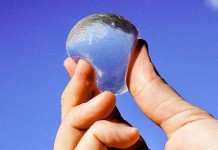A new study found that cooking with chlorinated or chloraminated tap water and iodised table salt could put potentially harmful toxins in your food. However, by limiting the cooking time, temperature, and using salt which is fortified with “iodate” instead of “iodide”, you can reduce the risk.
Almost all municipal bodies in India add chlorine or molecules called chloramines that are made using ammoniato to disinfect water before release. While cooking with tap water, chlorine or chloramines react with the iodised table salt and create “hypoiodous acid”. This acid can react with food and other organic matter in the tap water to create cooking iodinated disinfection byproducts (I-DBPs).
Researchers analysed the I-DBPs formed during cooking with chlorinated and chloraminated tap water. They simulated cooking with different types of tap water at varying temperatures and time, and added wheat flour and iodised salt to see what I-DBPs would be formed.
Using cutting-edge chemistry techniques, they identified 14 completely new molecules and determined the structure of nine molecules. They then carried out tests to see how toxic nine of the molecules are and found that some of the molecules are 50-200 times more toxic than others.
The study was published in the Water Research journal.

























